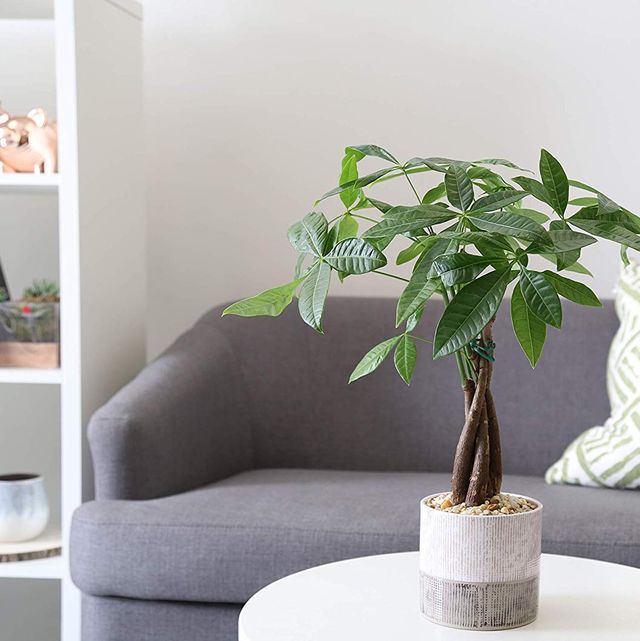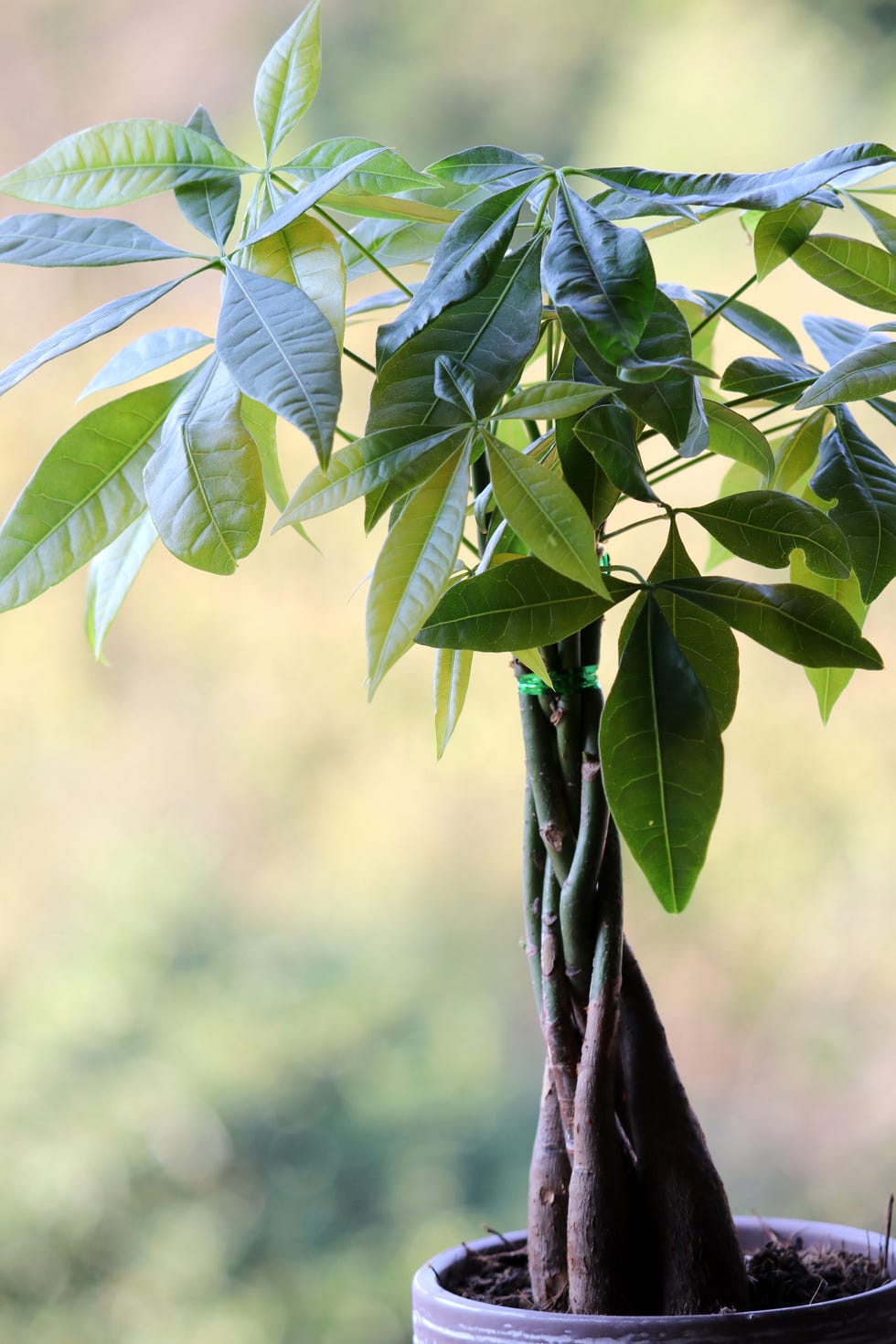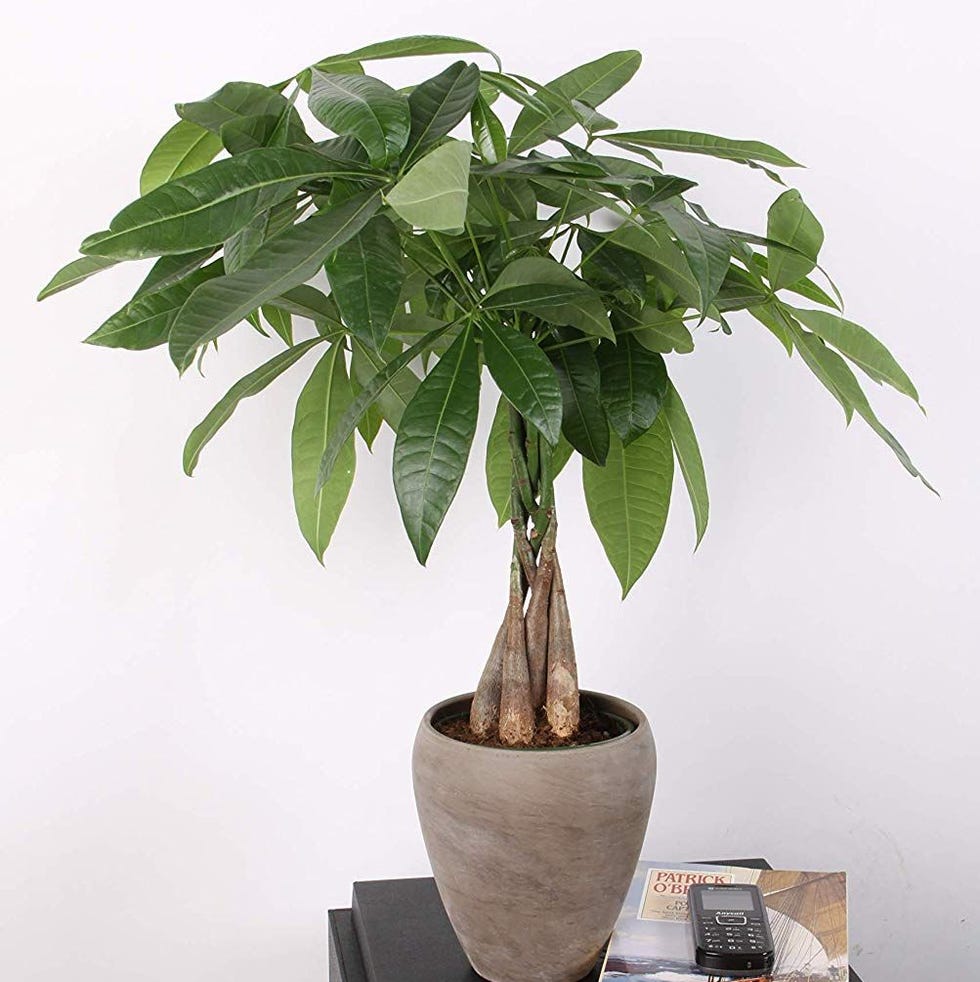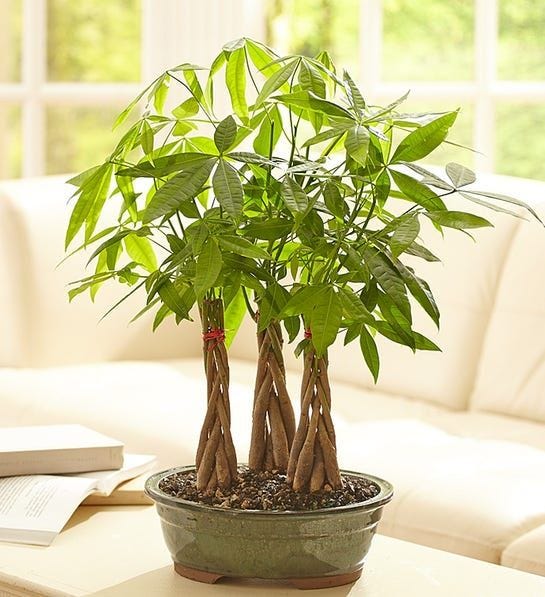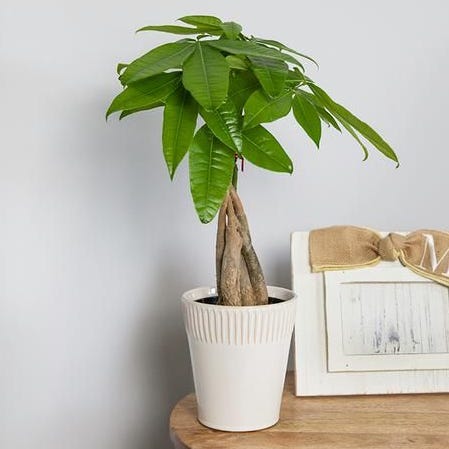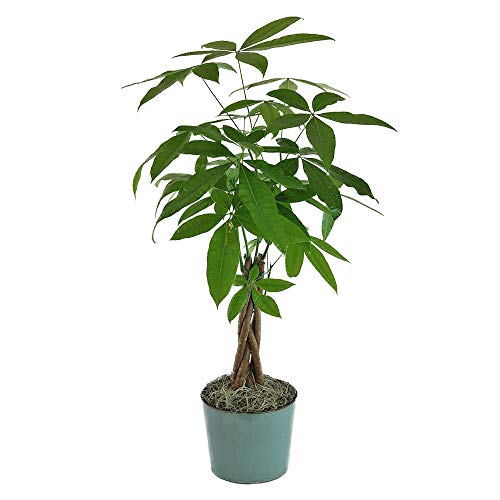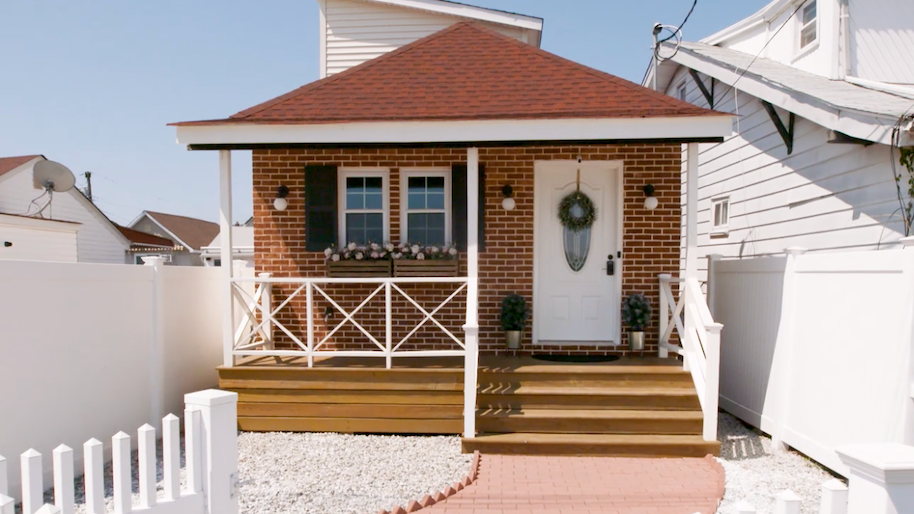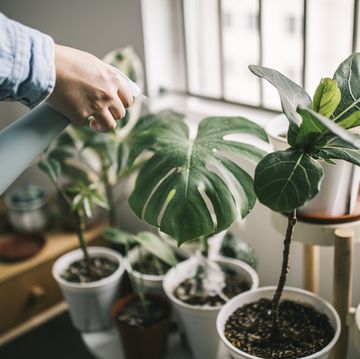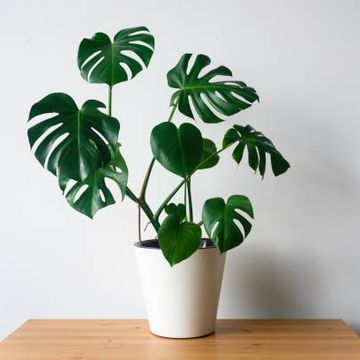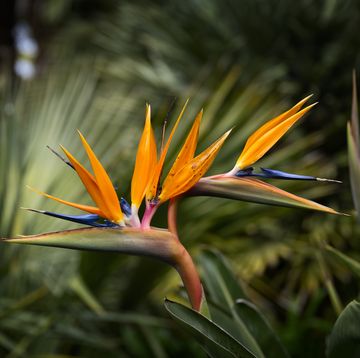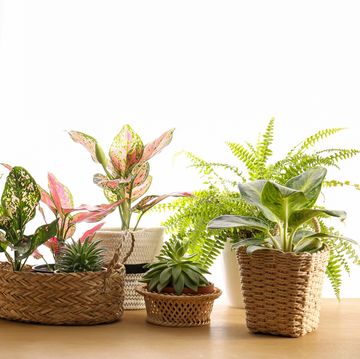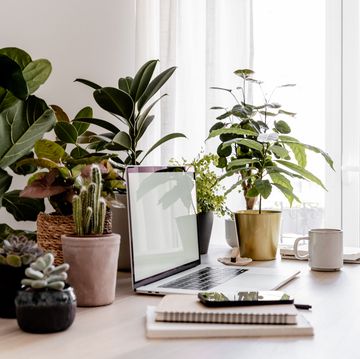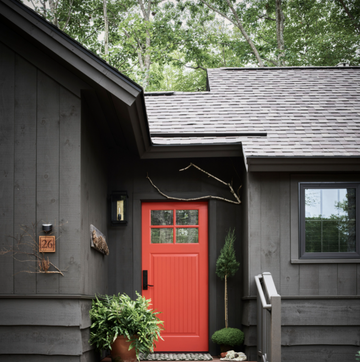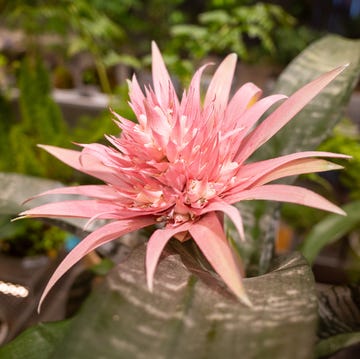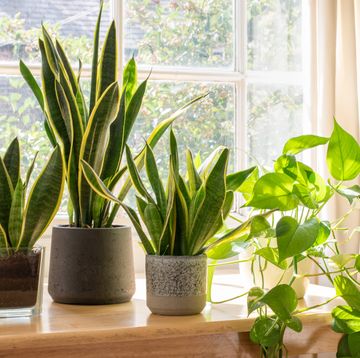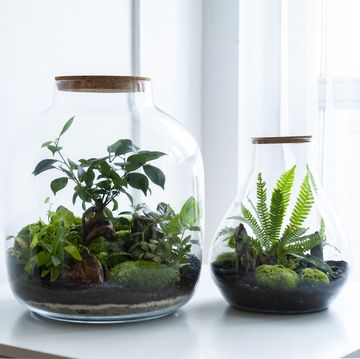One of the easiest indoor plants to care for, a money tree is ideal for new plant parents and greenery veterans who want a break from fussy routines. Money tree care is simple: Similar to the snake plant and philodendron, a money tree will forgive you if you forget to water it every once in a while. It's adaptable to various sun conditions and is even low-light friendly. Native to Central and South America, money trees can grow to more than 60 feet tall in their natural habitat. You won't have to prune your indoor money tree to contain it, but it can still reach an impressive six feet tall. And with its corner-filling greenery, this tall, glossy, and handsome houseplant will repay your efforts.
Money trees might pack you back in yet another way: They're rumored to bring prosperity, abundance, and good fortune into your life (hence the name), so a money tree is a great lucky gift for a grad or friend starting a new life chapter. It's also always a great idea to buy yourself one to manifest good things in your home. Read on to learn how to care for a money tree and get tips to keep your money tree happy and healthy.
Why Are Money Trees Considered Lucky?
Money trees, also known as Pachira aquatica, are considered a symbol of luck and prosperity—but they haven't had that meaning for all that long. According to Bloomscape, this belief doesn't date back centuries, as you might expect, but rather to the 1980s. The braided money tree as we know it was actually first cultivated by a truck driver in Taiwan and quickly became popular in Asia among practitioners of feng shui.
Money Tree Plant Care Basics
Money tree care is easy if you know the basics and stick to them. Learn how to keep your money tree plant growing, without shedding leaves or turning brown.
Sunlight
Money trees like bright, indirect light, which means you should place yours near a sunny window that faces east, west, or south. Just be careful about giving it direct sunlight, which can scorch its leaves, especially during the hottest months of the year. That's because the small money trees we grow indoors are juvenile plants; in nature, they'd be shaded from direct sun by taller trees in the forest.
Money trees start to reach toward the sun as they grow, so turn your plant periodically to make sure it expands evenly.
Water
Even though money trees grow in wetlands, they don't like to stay soaking wet. Water your money tree until water runs out of the bottom of the pot every one to two weeks, allowing the soil to mostly dry out between waterings. You may find that you need to water it more or less often depending on the conditions inside your home. The best way to tell if a money tree needs water is to poke your finger into the soil. If it still feels wet, wait a few more days and check again before you give it a drink. Also, dump the saucer underneath your plant when it's finished draining each time you water it.
Temperature and Humidity
Money tree plants are tropical, so they do best in warm environments between 65 and 85 degrees. To increase the humidity to around 50 percent, where money plants like it, you can run a humidifier or group other houseplants near your money tree plant; they'll transpire (release water vapors) and be mutually beneficial to each other. Misting actually isn't an effective way to boost humidity, no matter how many times you've heard or read that suggestion.
Do I Need to Braid My Money Tree?
While money tree plants don't have to be braided, most modern money trees are braided when you buy them to give them a more substantial trunk. Braided money trees are actually multiple plants that have had their trunks woven together during growth, while they're flexible. If you'd like to braid your plant, weave the trunks together gently and loosely tie a string around the top to keep it together. As the tree grows, continue this process.
How to Prune and Propagate Your Money Tree
Money tree plants are traditionally round on top, but you can also let your plant do its own thing and just prune problematic parts to keep your plant thriving and encourage new growth. You can also prune your plant to keep it small if you'd like. Regular pruning of the lower leaves also helps to encourage new growth at the top of the plant.
The easiest time to propagate your money tree is during the spring or summer months when the plant is actively growing. Here's how to properly cut trimmings in order to propagate:
- Cut a segment, at least 4 inches long, from a healthy stem, making sure to include new nodes.
- Remove the lower leaves and place the cutting in a cup or bowl of water. Submerge only the bottom.
- Once the cutting has sprouted roots, you can pot it in regular potting soil.
Common Money Tree Problems
Money tree plants are prone to bugs like aphids and to scaling, but applying neem oil usually takes care those problems. These pests can cause major damage to your plant, so deal with them as soon as you see them to avoid loose, drooping, and dying leaves.
Yellow or Brown Leaves
Typically, yellowing or browning leaves indicate that you are either overwatering or underwatering your money tree. If the leaves are both discolored and curling, you're underwatering. Look to the trunk to see signs of overwatering.
Soft Stems or Trunk
If the stems or trunk of your plant are becoming too soft (slightly squishy to the touch), you're overwatering it. Place it in a spot with brighter sun and give it a break from your regular watering schedule.
Leggy Branches
If you notice there's no new leaf growth you're not giving it enough light. A new location, supplemental fertilizer or plant food, or a grow light may help.
Where to Buy a Money Tree
We like to recommend these places to buy a money tree online—many of them allow you to customize your planter or select a size. It's always great to head to your local nursery too.
Money Tree Care FAQs
Is a Money Tree Plant Toxic?
No, the money tree plant is safe for both pets and humans. That being said, we don't recommend eating it.
Do Money Trees Flower?
When grown outdoors, money trees can produce yellow-white flowers through pollination. Because of the need for bees or other pollinators, the tree won't bloom indoors.
How Long Do Money Tree Plants Live?
With the proper care routine and growing conditions, money trees can live for more than a decade.
